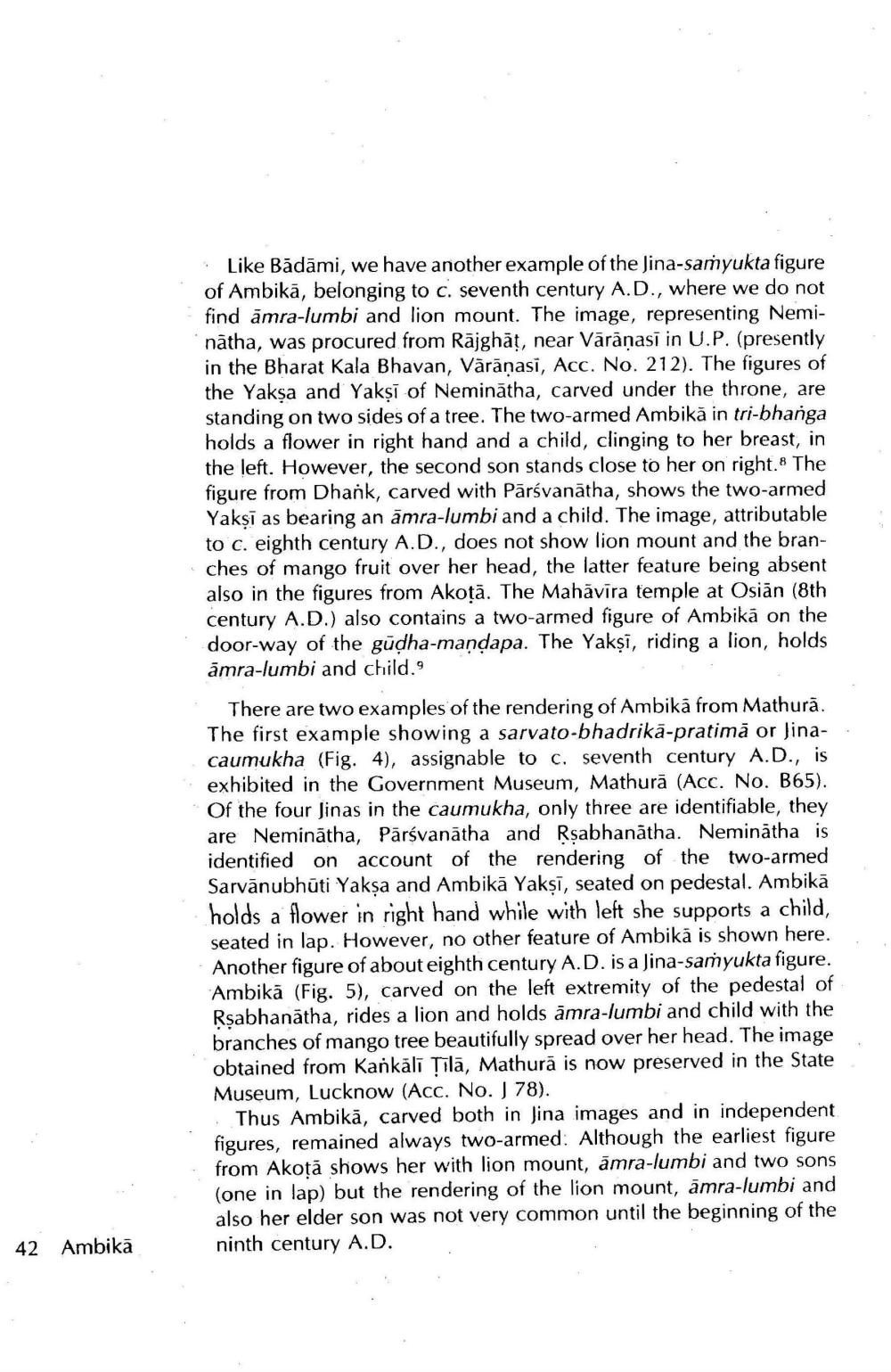________________
Like Bādāmi, we have another example of the Jina-samyukta figure of Ambikā, belonging to c. seventh century A.D., where we do not find amra-lumbi and lion mount. The image, representing Neminátha, was procured from Rājghāt, near Vārānasi in U.P. (presently in the Bharat Kala Bhavan, Vārānasi, Acc. No. 212). The figures of the Yaksa and Yaksi of Neminātha, carved under the throne, are standing on two sides of a tree. The two-armed Ambika in tri-bhanga holds a flower in right hand and a child, clinging to her breast, in the left. However, the second son stands close to her on right. The figure from Dhank, carved with Pārsvanātha, shows the two-armed Yakși as bearing an amra-lumbi and a child. The image, attributable to c. eighth century A.D., does not show lion mount and the bran·ches of mango fruit over her head, the latter feature being absent
also in the figures from Akotā. The Mahāvīra temple at Osian (8th century A.D.) also contains a two-armed figure of Ambika on the door-way of the gūdha-mandapa. The Yakşi, riding a lion, holds amra-lumbi and child.
There are two examples of the rendering of Ambika from Mathura. The first example showing a sarvato-bhadrikā-pratimă or Jina-. caumukha (Fig. 4), assignable to c. seventh century A.D., is exhibited in the Government Museum, Mathurā (Acc. No. В65). Of the four Jinas in the caumukha, only three are identifiable, they are Neminātha, Pārsvanātha and Rsabhanātha. Neminātha is identified on account of the rendering of the two-armed Sarvānubhūti Yaksa and Ambikā Yaksi, seated on pedestal. Ambika holds a flower in right hand while with left she supports a child, seated in lap. However, no other feature of Ambika is shown here. Another figure of about eighth century A.D. is a Jina-samyukta figure. Ambikā (Fig. 5), carved on the left extremity of the pedestal of Rsabhanātha, rides a lion and holds āmra-lumbi and child with the branches of mango tree beautifully spread over her head. The image obtained from Kankäli Tilā, Mathurā is now preserved in the State Museum, Lucknow (Acc. No. J 78). · Thus Ambikā, carved both in Jina images and in independent figures, remained always two-armed. Although the earliest figure from Akotā shows her with lion mount, āmra-lumbi and two sons (one in lap) but the rendering of the lion mount, āmra-lumbi and also her elder son was not very common until the beginning of the ninth century A.D.
42 Ambika




